- Work & Careers
- Life & Arts

Superyachts aim to go green — but at what cost?

- Superyachts aim to go green — but at what cost? on x (opens in a new window)
- Superyachts aim to go green — but at what cost? on facebook (opens in a new window)
- Superyachts aim to go green — but at what cost? on linkedin (opens in a new window)
- Superyachts aim to go green — but at what cost? on whatsapp (opens in a new window)
Victor Mallet
Roula Khalaf, Editor of the FT, selects her favourite stories in this weekly newsletter.
It is hard to think of a more visible manifestation of great wealth and excessive consumption than a superyacht, as Russian oligarchs have discovered to their cost, following Vladimir Putin’s invasion of Ukraine in February.
As western governments began detaining these very obvious luxury assets at harbours and shipyards around the world in successive rounds of economic sanctions aimed at Moscow, the targeted billionaires directed crews to steer the vessels to safe havens such as the Maldives in the Indian Ocean or Turkey in the Mediterranean. Roman Abramovich’s 163-metre Eclipse, one of the world’s largest superyachts and estimated to cost more than $1bn, found refuge in the Turkish port of Marmaris.
Long before the latest Ukraine war, however, the superyacht industry faced a problem unrelated to any support the ships’ wealthy owners may have provided to warmongering authoritarian regimes: their impact on the environment and the impression they gave that the rich could not care less about climate change.
Most superyachts — typically defined as a leisure vessel more than 30 metres or 100ft in length — are essentially motor vessels like small cruise liners, catering to proprietors or charterers and a few pampered guests. The biggest have helicopter pads, swimming pools and gyms as well as luxury suites. Some even have mini-submarines.

Very few are sailing yachts, and most of them consume vast quantities of diesel. Only now are manufacturers starting to develop new technologies such as hydrogen-powered electric propulsion that will cut emissions.
In the meantime, building the boats, operating them and, eventually, scrapping them all have a damaging effect on the environment. The same is true of aircraft and cars, but the very visibility of superyachts in tourist hotspots, makes their ecological footprint an increasingly sensitive topic. The global fleet has grown more than sixfold since 1985 to reach more than 5,200, according to Superyacht Times . And the fleet cruises the world’s vulnerable oceans.
“For sure, now it’s really high up the agenda — there’s been a fundamental shift,” says Monaco-based superyacht designer Espen Oeino, who reckons it is only in the past few years that most proprietors have really started to pay attention to yacht emissions. Clients ask him what can be done to reduce energy consumption onboard, both for propulsion and for the so-called “hotel load” of air-conditioning and other services, and even how to build the boat in the first place in a responsible way.

Rob Doyle, another naval architect who designs superyachts and is based in Kinsale in Ireland, agrees that more owners are beginning to take notice of the need to reduce carbon emissions and protect the environment, though many are still concerned about the cost. “There is still a huge amount of greenwashing,” he says. “You look at the magazines and you’ll never see a bad superyacht.”

And bad they often are. Research by anthropologists Beatriz Barros and Richard Wilk of Indiana University into the carbon footprints of the super-rich found that yachts contributed an outsized share of the carbon emissions of the billionaires who own them — far more than their private jets or mansions.
For former Chelsea Football Club owner Abramovich, for example, of the 31,200 tonnes of CO₂ equivalent he is calculated to have emitted in 2018, no less than 22,400 tonnes came from his yachts. Yacht emissions for Bernard Arnault, owner of LVMH and France’s richest man, accounted for nearly 9,000 tonnes of his total of 10,400 tonnes.
There are other ways for the wealthy to be embarrassed by their superyachts. Dutch shipyard Oceanco is facing resistance from angry locals after asking the city of Rotterdam to temporarily dismantle the old Koningshaven Bridge so that Amazon founder Jeff Bezos’s new three-masted vessel — this one is a sailing yacht costing hundreds of millions of dollars — can reach the port and the open sea.

But the impact on the climate is still the environmental whale in the room for yacht owners, builders and designers: Bill Gates and Elon Musk are both big carbon emitters, but their 2018 numbers were much lower than those of their fellow billionaires because they did not have yachts, the Barros-Wilk paper showed.
The accelerating effort to green superyachts reflects similar moves in the aircraft and vehicle industries to adopt new technologies and systems that help to reduce or eliminate carbon emissions and other pollution.
For superyacht designers and builders, the process starts with the shape of the hull or hulls, because there are few things so wasteful of energy as pushing a heavy metal or composite vessel through a fluid as dense as water. For both Oeino and Doyle, this search for what Oeino calls the “geometry of an easily driven hull” means looking at multihulls (catamarans or trimarans) for the next generation of big yachts, because they are designed to skim along the surface of the sea rather than laboriously plough through it, even if there are obvious constraints on weight and what you can do with the interior space.

Next, propulsion. There are already diesel-electric boats in service, which use diesel generators running at optimum revolutions (more economical, less polluting) to power electric motors, and, in future, the idea is to run the electric motors with the output from hydrogen fuel cells.
Then there is the electricity needed for the yacht’s hotel load, principally air-conditioning and the making of fresh water from seawater, but also lights and other electrical systems. Solar panels can produce some power but rarely enough even to run a present-day superyacht at anchor, so to charge batteries and run the boat, some other form of carbon-free electricity generation is needed to replace the diesel generators widely in use today.
For Barros and Wilk, none of this can justify owning any kind of superyacht. They write: “While many billionaires have taken pro-environmental actions in their personal lives or their corporate connections or donate money to climate change organisations and purchase carbon offsets, none of these actions actually ‘cancels out’ their total emissions. A 90-metre yacht can be touted as energy efficient or environmentally friendly but, as critics of ‘eco-chic’ point out, it is still a huge waste of resources, a frivolous luxury in a warming world.”
But the industry is trying. Doyle’s answer, developed by his own firm and Van Geest Design, is Domus (“home” in Latin), a project for a 40-metre sailing trimaran described as “the first truly zero-emission yacht” over 750 gross tonnes, which would generate electricity to charge its batteries from solar panels, hydrogen fuel cells and its own propellers acting as dynamos when the boat is sailing.
“It came out of a conversation we had with a client,” says Doyle. “We proposed this project with fuel cells, and regenerative sailing. It’s silent . . . people just want to listen to the water and the wind coming across and not have the hum of generators or the whiff of diesel.”
People just want to listen to the water and the wind coming across and not have the hum of generators or the whiff of diesel Rob Doyle, yacht designer
Hydrogen propulsion is in its infancy for mass transport. The gas is difficult to store, though it can be made from methanol, and there is, as yet, no distribution network for the fuel. But the interest in hydrogen is just one sign of how the yacht industry is hunting for ways to lower emissions in the years ahead as the pressure from regulators — and public opinion — increases.
Oeino notes that in some places, including the World Heritage Site fjords such as Geirangerfjord in his native Norway, rules limiting emissions are already in place and becoming stricter, and will help to force the pace of the greening of ships and yachts.
The first systems for big yachts to be fully powered by renewables are likely to be the tenders, the smaller boats that ferry people to and from the shore, which are already starting to shift to electric propulsion, and the equipment that contributes to the hotel load when the ship is stationary. Hotel loads can, in any case, be reduced by sensible design and operation, given that indoor superyacht spaces are heavily air-conditioned all the time despite owners and guests spending a huge amount of their time outside, on deck.
Transocean travel with zero emissions is a much bigger ask, says Oeino. “A lot of stuff is already being implemented, but the full electric big yacht with zero emissions is still not a reality,” he explains, because it is impossible to store or produce enough energy onboard.
“It will be a combination of things that will bring us all to lower emissions and eventually zero emissions.”
‘Yachts for science’ can be a breakthrough for explorers

For yacht owners who feel guilty not only about their environmental footprint but also about how little they use their expensive boats, Rosie O’Donnell has the perfect solution: Yachts for Science .
YFS, which its co-ordinator O’Donnell describes as “a dating agency, almost like a Tinder for the sea”, is a platform to match idle yachts and their crews with scientists in search of a vessel that can reach remote areas and allow them to research everything from coral reefs and manta rays to great white sharks. In some cases, the owners and their families like to be on board for the ride.
“It’s for people who want to be a bit philanthropic so they have got something more to talk about than sitting on the back of their boat in St Tropez drinking cocktails,” says O’Donnell. “It’s about making the ownership more worthwhile.”
The idea of YFS fits with the trend among yachtowners to commission robust so-called expedition or explorer yachts that can travel long distances, to the Antarctic for example, rather than being satisfied with something that will buzz at high speeds around the resorts of the Mediterranean or the Caribbean.
“The yachting industry is always looking for ways to reinvent itself,” says Dominic Byrne of Arksen Marine , a builder that backs YFS and is building a new range of high-tech motor yachts. “People are looking to go further afield, and they are looking to do it in an eco-friendly way as much as possible.”
This article is part of FT Wealth , a section providing in-depth coverage of philanthropy, entrepreneurs, family offices, as well as alternative and impact investment
Climate Capital

Where climate change meets business, markets and politics. Explore the FT’s coverage here .
Are you curious about the FT’s environmental sustainability commitments? Find out more about our science-based targets here
Promoted Content
Follow the topics in this article.
- Cars, bikes, planes and boats Add to myFT
- Luxury goods Add to myFT
- Climate change Add to myFT
- Pollution Add to myFT
- Emission standards Add to myFT
International Edition
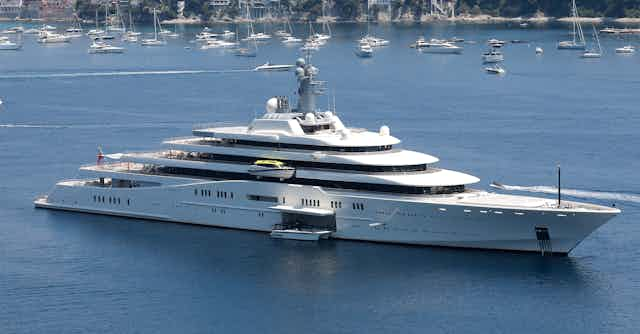
Private planes, mansions and superyachts: What gives billionaires like Musk and Abramovich such a massive carbon footprint
Distinguished Professor and Provost's Professor of Anthropology; Director of the Open Anthropology Institute, Indiana University
Ph.D. Candidate in Anthropology, Indiana University
Disclosure statement
The authors do not work for, consult, own shares in or receive funding from any company or organisation that would benefit from this article, and have disclosed no relevant affiliations beyond their academic appointment.
Indiana University provides funding as a member of The Conversation US.
View all partners
- Bahasa Indonesia
Tesla’s Elon Musk and Amazon’s Jeff Bezos have been vying for the world’s richest person ranking all year after the former’s wealth soared a staggering US$160 billion in 2020, putting him briefly in the top spot .
Musk isn’t alone in seeing a significant increase in wealth during a year of pandemic, recession and death. Altogether, the world’s billionaires saw their wealth surge over $1.9 trillion in 2020, according to Forbes.
Those are astronomical numbers, and it’s hard to get one’s head around them without some context. As anthropologists who study energy and consumer culture, we wanted to examine how all that wealth translated into consumption and the resulting carbon footprint.
Walking in a billionaire’s shoes
We found that billionaires have carbon footprints that can be thousands of times higher than those of average Americans.
The wealthy own yachts, planes and multiple mansions, all of which contribute greenhouse gases to the atmosphere. For example, a superyacht with a permanent crew, helicopter pad, submarines and pools emits about 7,020 tons of CO2 a year, according to our calculations, making it by the far worst asset to own from an environmental standpoint. Transportation and real estate make up the lion’s share of most people’s carbon footprint, so we focused on calculating those categories for each billionaire.
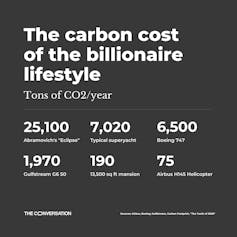
To pick a sample of billionaires, we started with the 2020 Forbes List of 2,095 billionaires. A random or representatives sample of billionaire carbon footprints is impossible because most wealthy people shy away from publicity , so we had to focus on those whose consumption is public knowledge. This excluded most of the superrich in Asia and the Middle East .
We combed 82 databases of public records to document billionaires’ houses, vehicles, aircraft and yachts. After an exhaustive search, we started with 20 well-known billionaires whose possessions we were able to ascertain, while trying to include some diversity in gender and geography. We have submitted our paper for peer review but plan to continue adding to our list.
We then used a wide range of sources, such as the U.S. Energy Information Administration and Carbon Footprint , to estimate the annual CO2 emissions of each house, aircraft, vehicle and yacht. In some cases we had to estimate the size of houses from satellite images or photos and the use of private aircraft and yachts by searching the popular press and drawing on other studies . Our results are based on analyzing typical use of each asset given its size and everything else we could learn.
We did not try to calculate each asset’s “ embodied carbon ” emissions – that is, how much CO2 is burned throughout the supply chain in making the product – or the emissions produced by their family, household employees or entourage. We also didn’t include the emissions of companies of which they own part or all, because that would have added another significant degree of complexity. For example, we didn’t calculate the emissions of Tesla or Amazon when calculating Musk’s or Bezos’ footprints.
In other words, these are all likely conservative estimates of how much they emit.
Your carbon footprint
To get a sense of perspective, let’s start with the carbon footprint of the average person.
Residents of the U.S., including billionaires, emitted about 15 tons of CO2 per person in 2018. The global average footprint is smaller, at just about 5 tons per person.
In contrast, the 20 people in our sample contributed an average of about 8,190 tons of CO2 in 2018. But some produced far more greenhouse gases than others.
The jet-setting billionaire
Roman Abramovich, who made most of his $19 billion fortune trading oil and gas, was the biggest polluter on our list. Outside of Russia, he is probably best known as the headline-grabbing owner of London’s Chelsea Football Club.

Abramovich cruises the Mediterranean in his superyacht, named the Eclipse , which at 162.5 meters bow to stern is the second-biggest in the world, rivaling some cruise ships. And he hops the globe on a custom-designed Boeing 767 , which boasts a 30-seat dining room. He takes shorter trips in his Gulfstream G650 jet, one of his two helicopters or the submarine on his yacht.
He maintains homes in many countries, including a mansion in London’s Kensington Park Gardens, a chateau in Cap D’Antibes in France and a 28-hectare estate in St. Barts that once belonged to David Rockefeller . In 2018, he left the U.K. and settled in Israel , where he became a dual citizen and bought a home in 2020 for $64.5 million.
We estimate that he was responsible for at least 33,859 metric tons of CO2 emissions in 2018 – more than two-thirds from his yacht, which is always ready to use at a moment’s notice year-round.
Massive mansions and private jets
Bill Gates, currently the world’s fourth-richest person with $124 billion, is a “modest” polluter – by billionaire standards – and is typical of those who may not own a giant yacht but make up for it with private jets.

Co-founder of Microsoft, he retired in 2020 to manage the Bill and Melinda Gates Foundation, the world’s largest charity, with an endowment of $50 billion.
In the 1990s, Gates built Xanadu – named after the vast fictional estate in Orson Welles’ “Citizen Kane” – at a cost of $127 million in Medina, Washington. The giant home covers 6,131 square meters, with a 23-car garage, a 20-person cinema and 24 bathrooms. He also owns at least five other dwellings in Southern California, the San Juan Islands in Washington state, North Salem, New York, and New York City, as well as a horse farm , four private jets, a seaplane and “a collection” of helicopters .
We estimated his annual footprint at 7,493 metric tons of carbon, mostly from a lot of flying.
The environmentally minded tech CEO
South African-born Elon Musk, CEO of Tesla Motors and SpaceX, has a surprisingly low carbon footprint despite being the world’s second-richest person, with $177 billion – and he seems intent on setting an example for other billionaires .

He doesn’t own a superyacht and says he doesn’t even take vacations .
We calculated a relatively modest carbon footprint for him in 2018, thanks to his eight houses and one private jet. This year, his carbon footprint would be even lower because in 2020 he sold all of his houses and promised to divest the rest of his worldly possessions .
While his personal carbon footprint is still hundreds of times higher than that of an average person, he demonstrates that the superrich still have choices to make and can indeed lower their environmental impact if they so choose.
His estimated footprint from the assets we looked at was 2,084 tons in 2018.
The value of naming and shaming
The aim of our ongoing research is to get people to think about the environmental burden of wealth.
While plenty of research has shown that rich countries and wealthy people produce far more than their share of greenhouse gas emissions, these studies can feel abstract and academic, making it harder to change this behavior.
[ Like what you’ve read? Want more? Sign up for The Conversation’s daily newsletter .]
We believe “shaming” – for lack of a better word – superrich people for their energy-intensive spending habits can have an important impact, revealing them as models of overconsumption that people shouldn’t emulate.
Newspapers, cities and local residents made an impact during the California droughts of 2014 and 2015 by “drought shaming” celebrities and others who were wasting water, seen in their continually green lawns . And the Swedes came up with a new term – “ flygskam ” or flying shame – to raise awareness about the climate impact of air travel.
Climate experts say that to have any hope of limiting global warming to 1.5 degrees Celsius above preindustrial levels, countries must cut their emissions in half by 2030 and eliminate them by 2050.
Asking average Americans to adopt less carbon-intensive lifestyles to achieve this goal can be galling and ineffective when it would take about 550 of their lifetimes to equal the carbon footprint of the average billionaire on our list.
- Climate change
- Carbon emissions
- Carbon footprint
- Paris Agreement
- Billionaires
- Roman Abramovich

Communications and Events Officer

Lecturer (Hindi-Urdu)

Director, Defence and Security

Opportunities with the new CIEHF

School of Social Sciences – Public Policy and International Relations opportunities

The global authority in superyachting
- NEWSLETTERS
- Yachts Home
- The Superyacht Directory
- Yacht Reports
- Brokerage News
- The largest yachts in the world
- The Register
- Yacht Advice
- Yacht Design
- 12m to 24m yachts
- Monaco Yacht Show
- Builder Directory
- Designer Directory
- Interior Design Directory
- Naval Architect Directory
- Yachts for sale home
- Motor yachts
- Sailing yachts
- Explorer yachts
- Classic yachts
- Sale Broker Directory
- Charter Home
- Yachts for Charter
- Charter Destinations
- Charter Broker Directory
- Destinations Home
- Mediterranean
- South Pacific
- Rest of the World
- Boat Life Home
- Owners' Experiences
- Interiors Suppliers
- Owners' Club
- Captains' Club
- BOAT Showcase
- Boat Presents
- Events Home
- World Superyacht Awards
- Superyacht Design Festival
- Design and Innovation Awards
- Young Designer of the Year Award
- Artistry and Craft Awards
- Explorer Yachts Summit
- Ocean Talks
- The Ocean Awards
- BOAT Connect
- Between the bays
- Golf Invitational
- Boat Pro Home
- Pricing Plan
- Superyacht Insight
- Product Features
- Premium Content
- Testimonials
- Global Order Book
- Tenders & Equipment

How Emissions Regulations Are Affecting The Superyacht Industry
Regulations aimed at limiting noxious emissions from superyacht engines will be in place by January 2021. Kate Lardy investigates how these new rules are impacting the industry ahead of the approaching deadline.
“After January 1, 2021, we are out of business selling boats over 24 meters,” Pat Healey, president and CEO of Viking Yachts , announced at the Fort Lauderdale Boat Show this past fall. He was referring to the upcoming deadline for all yachts over 24 meters load line length (approximately 27.5 meters or 90ft LOA) to comply with the International Maritime Organisation’s (IMO) Tier III limits for nitrogen oxide (NOx) emissions. More precisely, he was speaking about the impracticality of meeting this requirement on Viking’s 92 Convertible and 93 Motor Yacht – models Healey says the yard will no longer build after January 1 2021. “[Regulators] are mandating impossible regulations that require solutions that don’t exist in today’s world,” he added.
Tier III (part of amendments made to the International Convention for the Prevention of Pollution from Ships adopted in 2008) came into effect on January 1, 2016. It set new NOx emission limits for new engines on vessels operating within special areas known as NOx Emission Control Areas (which currently are: the East and West Coasts of the US and Canada, and around the US Virgin Islands, Hawaii and Puerto Rico). Regulators granted a five-year exemption for vessels under 500GT to allow technology time to catch up with the requirements. Unfortunately, it hasn’t.
Viking is the first and only builder so far to announce that it will terminate production of its two largest models because of the regulations, yet the impending deadline is an issue concerning all builders of boats in the 90ft to 150ft range.
One Solution Does Not Fit All
Engine modifications aren’t enough to meet the Tier III standards – compliance requires some sort of exhaust after-treatment. The go-to solution for ships and new yachts over 500GT, which have had to comply since 2016, has been selective catalytic reduction (SCR), which uses a urea water solution to break down NOx into harmless nitrogen and water. Results have been mixed. SCR has worked for commercial ships. The challenge is that a yacht’s operating profile is critically different from a ship’s – the average engine load while cruising is lower. SCR requires that exhaust temperatures reach a certain level to decompose urea exhaust fluid to water vapour and ammonia, so it can be ineffective at idle and low speeds.
Because of a yacht’s high power-to-weight ratio, the hefty system also has more impact on a yacht’s efficiency and performance. SCR makes boats heavier, slower and more expensive to operate and maintain, says Lonni Rutt, Viking’s vice president of design and engineering. The SCR footprint, according to Rutt, is approximately one-third of each engine. “We simply don’t have the space in our engine rooms,” he says, adding that this issue is particularly critical in the 90ft to 120ft segment.
However, Richard Boggs of EnerYacht (developer of the SeaClean exhaust treatment system) says the impact extends to even larger yachts. “There isn’t that much volume in a 50-meter [164ft] boat to put the SCR systems that are on the market right now,” he says.
Then there is the added problem of incorporating a tank to hold urea. The size that the tank needs to be is still a matter of debate. In theory, a yacht needs to carry only enough urea to run the SCR within an Emission Control Area. However, assessing the amount is tricky. Too little and you run out and risk exorbitant fines for noncompliance; too much and you may incur maintenance issues. “The storage life of the diesel exhaust fluid [DEF, the urea solution] is around six months; after that time, it will crystallise and possibly block the DEF piping if the water content vaporises,” says Roger Sowerbutts, president of Horizon Yacht USA . Horizon is looking at a tank able to hold five to 10 percent of the fuel capacity.
The Quest Is On
Currently, research and development are in high gear on a growing number of after-treatment systems. Boggs is working with a European partner in the SCR retrofit business that has been conducting certified retrofits for buses in several European cities. He is marinising their tried-and-true system, which works in conjunction with EnerYacht’s highly effective diesel particulate filter system.
Yacht exhaust specialist MarQuip recently introduced a solution it calls the “most compact custom system for yachts under 500GT or 50 meters.” Prompted by a Dutch client building a 92ft semi-displacement boat, it created a case study that integrates its water injection system inside the SCR/silencer unit without having to increase the size of the engine room.
“We normally work with water-cooled exhaust systems – we combine our features to save space and fit the correct after-treatments in the same location as we had the original exhaust system,” says Jeroen van der Matten, general manager of operations for MarQuip. Installed above the engines, the system is approximately 7ft 6in by 4ft 7in for this particular 92ft boat.
Sanlorenzo is collaborating with other yacht builders to develop alternative solutions that will be lighter and more efficient than SCR at idle and low-speed navigation. “This is the direction already taken by Feadship that, recognising the same problems with SCR on mega yachts over 500GT, is now working to test and implement an innovative NOx treatment system together with the Netherlands Organization for Applied Scientific Research, TNO,” says Paolo Bertetti, Sanlorenzo’s technical and R&D vice president.
Feadship’s innovation is called Oxywash. Divided into modules, it fits in tight engine rooms and does not require a urea tank. It works by making NOx water-soluble, through a catalyst when the exhaust temperature is high, or by injecting ozone when the temperature is lower. When this water-soluble NOx is immersed in seawater it becomes nitrite and nitrate, which are naturally present in seawater.
“At the moment we are running a full-scale test with regulation, which will be finished in 2020. After successful tests we will install the first system on a Feadship,” says Roderick De Vries, technical director at Feadship Koninklijke De Vries Scheepsbouw. A number of yacht builders are waiting on engine manufacturers to deliver the engine and SCR system as one unit, rather than adding on third-party after- treatment. For Horizon, Sowerbutts says that MAN has presented a good solution for the 1,650hp engine: a compact SCR with small DEF pump and no need for a compressor to assist. MTU is working on its own solution. Tobias Kohl, MTU Friedrichshafen’s senior manager for yacht applications, says the company is “putting maximum R&D efforts” into the SCR for its series 2000 engines; the first prototypes have been built and tested.
Time Crunch
The challenge is that the January 1, 2021 deadline is fast approaching. Regulators have put the onus on engine manufacturers, but they appear not ready. “Considering that we have the highest power density engine, the integration with SCR systems requires intensive testing and optimisation,” Kohl says. “Based on the technical development challenges, as well as the demanding integration work at the shipyards, we believe that a transition phase is needed for development and implementation of SCR systems in yachts requiring IMO Tier III solutions.”
The rush to 2021 concerns Nicola Onori, technical director at Overmarine . “If extension of the exemption is not granted, all yachts will be forced to install SCR systems which are still ‘prototypes.’” As it currently stands, Healey has heard that it will be at least 12 to 18 months past deadline before the engine companies are compliant. “In our view, more time is needed to allow engine manufacturers to refine SCR dedicated to yachts greater than 24 meters, less than 500GT, in order to get an overall positive effect on emissions,” Bertetti says.
Several yacht builders, including Viking Yachts, Overmarine and Sanlorenzo, have been working with the International Council of Marine Industry Associations (ICOMIA) on a new request for an extension – a previous proposal was rejected at a May 2019 meeting of the IMO Marine Environment Protection Committee. Two MEPC meetings are planned for 2020 and ICOMIA is hoping to get an appeal on the agenda before January 1, 2021.
Brace for Impact
“The pending IMO implementation is well intentioned but could see an entire segment of yacht buyers walk away from our industry, causing irreparable damage,” says Kitty McGowan, president of the US Superyacht Association. Bertetti adds: “If IMO NOx Tier III will have to be applied from January 2021 we expect that clients will buy either yachts slightly below the limit of 24 meters or exceeding 30 to 35 meters, where the reduction of accommodation space necessary to install an SCR and urea tank is not affecting the number of cabins available on board.”
Onori says that the regulations could make second- hand boats – with older, more polluting engines – more appealing. Costs for new vessels will go up. How much? “The engine manufacturers can’t provide precise quotes yet,” Sowerbutts says. “The extra cost will have to include DEF or urea tank, DEF pump, SCR and probably in many cases a hull extension to accommodate everything mentioned above.” Viking estimates it would add half a million dollars to the overall cost of its 92 and 93. “We have two boats affected; some companies will be wiped out,” Healey says.
Similar yachts for sale
More stories, most recent, from our partners, sponsored listings.
- Share full article
Advertisement
Supported by
Guest Essay
The Superyachts of Billionaires Are Starting to Look a Lot Like Theft

By Joe Fassler
Mr. Fassler is a journalist covering food and environmental issues.
If you’re a billionaire with a palatial boat, there’s only one thing to do in mid-May: Chart your course for Istanbul and join your fellow elites for an Oscars-style ceremony honoring the builders, designers and owners of the world’s most luxurious vessels, many of them over 200 feet long.
The nominations for the World Superyacht Awards were all delivered in 2022, and the largest contenders are essentially floating sea mansions, complete with amenities like glass elevators, glass-sided pools, Turkish baths and all-teak decks. The 223-foot Nebula, owned by the WhatsApp co-founder Jan Koum, comes with an air-conditioned helicopter hangar.
I hate to be a wet blanket, but the ceremony in Istanbul is disgraceful. Owning or operating a superyacht is probably the most harmful thing an individual can do to the climate. If we’re serious about avoiding climate chaos, we need to tax, or at the very least shame, these resource-hoarding behemoths out of existence. In fact, taking on the carbon aristocracy, and their most emissions-intensive modes of travel and leisure, may be the best chance we have to improve our collective climate morale and increase our appetite for personal sacrifice, from individual behavior changes to sweeping policy mandates.
On an individual basis, the superrich pollute far more than the rest of us, and travel is one of the biggest parts of that footprint. Take, for instance, Rising Sun, the 454-foot, 82-room megaship owned by the DreamWorks co-founder David Geffen. According to a 2021 analysis in the journal Sustainability, the diesel fuel powering Mr. Geffen’s boating habit spews an estimated 16,320 tons of carbon-dioxide-equivalent gases into the atmosphere annually, almost 800 times what the average American generates in a year.
And that’s just a single ship. Worldwide, more than 5,500 private vessels clock in about 100 feet or longer, the size at which a yacht becomes a superyacht . This fleet pollutes as much as entire nations: The 300 biggest boats alone emit 315,000 tons of carbon dioxide each year, based on their likely usage — about as much as Burundi’s more than 10 million inhabitants. Indeed, a 200-foot vessel burns 132 gallons of diesel fuel an hour standing still and can guzzle 2,200 gallons just to travel 100 nautical miles.
Then there are the private jets, which make up a much higher overall contribution to climate change. Private aviation added 37 million tons of carbon dioxide to the atmosphere in 2016, which rivals the annual emissions of Hong Kong or Ireland. (Private plane use has surged since then, so today’s number is likely higher.)
You’re probably thinking: But isn’t that a drop in the bucket compared with the thousands of coal plants around the world spewing carbon? It’s a common sentiment; last year, Christophe Béchu, France’s minister of the environment, dismissed calls to regulate yachts and chartered flights as “ le buzz ” — flashy, populist solutions that get people amped up but ultimately only fiddle at the margins of climate change.
But this misses a much more important point. Research in economics and psychology suggests humans are willing to behave altruistically — but only when they believe everyone is being asked to contribute. People “stop cooperating when they see that some are not doing their part,” the cognitive scientists Nicolas Baumard and Coralie Chevallier wrote last year in Le Monde.
In that sense, superpolluting yachts and jets don’t just worsen climate change; they lessen the chance that we will work together to fix it. Why bother when the luxury goods mogul Bernard Arnault is cruising around on the Symphony, a $150 million, 333-foot superyacht?
“If some people are allowed to emit 10 times as much carbon for their comfort,” Mr. Baumard and Ms. Chevallier asked, “then why restrict your meat consumption, turn down your thermostat or limit your purchases of new products?”
Whether we’re talking about voluntary changes (insulating our attics and taking public transit) or mandated ones (tolerating a wind farm on the horizon or saying goodbye to a lush lawn), the climate fight hinges, to some extent, on our willingness to participate. When the ultrarich are given a free pass, we lose faith in the value of that sacrifice.
Taxes aimed at superyachts and private jets would take some of the sting out of these conversations, helping to improve everybody’s climate morale, a term coined by the Georgetown Law professor Brian Galle. But making these overgrown toys a bit more costly isn’t likely to change the behavior of the billionaires who buy them. Instead, we can impose new social costs through good, old-fashioned shaming.
Last June, @CelebJets — a Twitter account that tracked the flights of well-known figures using public data, then calculated their carbon emissions for all to see — revealed that the influencer Kylie Jenner took a 17-minute flight between two regional airports in California. One Twitter user wrote , “kylie jenner is out here taking 3 minute flights with her private jet, but I’m the one who has to use paper straws.”
As media outlets around the world covered the backlash, other celebrities like Drake and Taylor Swift scrambled to defend their heavy reliance on private plane travel. (Twitter suspended the @CelebJets account in December after Elon Musk, a frequent target of jet-tracking accounts, acquired the platform.)
There’s a lesson here: Hugely disproportionate per capita emissions get people angry. And they should. When billionaires squander our shared supply of resources on ridiculous boats or cushy chartered flights, it shortens the span of time available for the rest of us before the effects of warming become truly devastating. In this light, superyachts and private planes start to look less like extravagance and more like theft.
Change can happen — and quickly. French officials are exploring curbing private plane travel. And just last week — after sustained pressure from activists — Schiphol Airport in Amsterdam announced it would ban private jets as a climate-saving measure.
Even in the United States, carbon shaming can have outsize impact. Richard Aboulafia, who’s been an aviation industry consultant and analyst for 35 years, says that cleaner, greener aviation, from all-electric city hoppers to a new class of sustainable fuels, is already on the horizon for short flights. Private aviation’s high-net-worth customers just need more incentive to adopt these new technologies. Ultimately, he says, it’s only our vigilance and pressure that will speed these changes along.
There’s a similar opportunity with superyachts. Just look at Koru, Jeff Bezos’ newly built 416-foot megaship, a three-masted schooner that can reportedly cross the Atlantic on wind power alone. It’s a start.
Even small victories challenge the standard narrative around climate change. We can say no to the idea of limitless plunder, of unjustifiable overconsumption. We can say no to the billionaires’ toys.
Joe Fassler is a journalist covering food and environmental issues. He is the author of “Light the Dark ” and the forthcoming novel “The Sky Was Ours.”
The Times is committed to publishing a diversity of letters to the editor. We’d like to hear what you think about this or any of our articles. Here are some tips . And here’s our email: [email protected] .
Follow The New York Times Opinion section on Facebook , Twitter (@NYTopinion) and Instagram .
- International edition
- Australia edition
- Europe edition

Superyacht sales surge prompts fresh calls for curbs on their emissions
Campaigners say a superyacht can produce 1,500 times more carbon than a typical family car, and the polluters should pay
The rising fortunes of the world’s billionaires during the pandemic helped fuel a record £5.3bn in superyacht sales last year, prompting calls for new curbs on their emissions.
New figures reveal that 887 superyachts were sold in 2021, an increase of more than 75% compared with the previous year. Yachting brokers say some of the demand has been from wealthy clients seeking a secure refuge from the pandemic.
Sam Tucker, head of the superyachts team at VesselsValue, the maritime and aviation data firm which compiled the report, said: “It has been the strongest year on record for the number of transactions and the money spent.” He said low interest rates and rising stock markets had meant more disposable income for the world’s richest people.
A superyacht is typically defined as a privately owned vessel 78 feet (24 metres) or more in length. According to industry data, there are more than 9,300 on the seas worth a total in excess of £50bn.
While maritime construction yards are keen to promote the green credentials of many superyachts, they are major polluters. It has been estimated a superyacht with permanent crew, helicopter pad, submarines and pools emits about 7,020 tonnes of carbon dioxide a year, more than 1,500 times higher than a typical family car.
Paul Stretesky, a professor of social sciences at Northumbria University and co-author of a 2019 report, Measuring the Ecological Impact of the Wealthy, said more financial levies were needed on the superyacht industry.

He said: “The damage done by this conspicuous consumption is incredible. It’s not something we should aspire to, it’s something we should stop.” Stretesky’s report found that the annual fuel costs of a superyacht can be about £300,000.
A report last year by the environmental platform EcoWatch analysed the carbon footprint of 20 billionaires. It found a superyacht was “by far the worst asset to own from an environmental standpoint”.
The Russian tycoon Roman Abramovich , who is reported to have owned at least five superyachts, topped the list published in February last year, accounting for estimated annual carbon emissions of nearly 34,000 tonnes of carbon dioxide. The biggest vessel in his fleet is the 163-metre (535ft) superyacht Eclipse.
It has nine decks, with the top one containing two helipads and a garage. It has a 16-metre (53ft) swimming pool that can be converted into a dancefloor. It is estimated to be worth £1bn after extensive refurbishments.
Amazon tycoon Jeff Bezos was near the bottom of the carbon footprint league table in last year’s analysis, but has rapidly climbed up the table in 2021 with a trip to the outer edge of space and reports he had commissioned a new superyacht with the project name Y721. The £350m yacht will accommodate 18 guests with a 40-stong crew and will be escorted by its own support vessel.
New rules were due to come into force in 2016 to curb some of the most dangerous nitrogen oxide emissions from superyachts, which can be about 300 times as potent as carbon dioxide at heating the atmosphere.
The industry successfully lobbied for the International Maritime Organization (IMO) emission standards to be delayed for five years for superyachts under 500 tonnes. They were finally implemented in January last year, but the US Coast Guard has said it will not enforce the regulations after lobbying by the marine industry which says the bulky equipment required to remove pollution out of engine exhaust is impractical on many yachts.
- Shipping emissions
- The Observer
- Greenhouse gas emissions
- Carbon footprints
- Luxury goods sector
- Luxury travel
- Roman Abramovich
Most viewed

- Got a Scoop?
- Arts & Entertainment
- Food & Drink
- Real Estate
- Indy Parenting
- Cover Stories
- Classifieds
- Create Event
Mega-Yacht Eco Issues
Share this:.
- Click to share on Facebook (Opens in new window)
- Click to share on X (Opens in new window)
- Click to email a link to a friend (Opens in new window)
- Click to print (Opens in new window)
Billionaire Lorenzo Fertitta cruised into town last week on his 285-foot mega-yacht the Lonian . The ship is reportedly outfitted with a swimming pool and an elevator to access all five decks. Apparently, this extravagance is not enough to serve Fertitta’s needs, as the ship is also traveling with a companion vessel, the 216-foot Hodor , which exists simply to carry his helicopter, extra boats, jet skis, cars, and probably other toys. These yachts are a slap in the face to everyone in the Santa Barbara community who has driven an electric car, everyone who has installed solar panels on their roof, and everyone who suffered at the hands of a raging wildfire.
While information about the fuel consumption of these ships is not publicly available, it is undoubtedly huge. According to the website EcoWatch, mega-yachts emit approximately 7,020 tons of CO2 per year. The average U.S. citizen has a CO2 footprint of 16 tons, and the global average is about 5 tons per person. Meanwhile, the average billionaire contributes 8,190 tons of CO2 to the atmosphere every year. For the highest-emitting billionaires, mega-yachts are responsible for the majority of their emissions. The fuel tank of the Lonian reportedly holds 160,000 liters of diesel fuel. Each ship likely consumes hundreds of liters of fuel every minute.
According to the most recent IPCC report , human emissions of CO2 have already warmed the planet by about 1.1°C, and warming will continue unless we quickly reduce emissions. In Santa Barbara, the changing climate will lead to more frequent droughts, higher vulnerability to catastrophic wildfires, and sea-level rise that will cause flooding and erosion along the coast. Many members of the Santa Barbara community and surrounding communities have already experienced the effects of the climate crisis first-hand, as fires have burned homes and taken lives. The urgency of this moment is palpable — we must take immediate steps to cut greenhouse gas emissions.
Our local government and activist organizations should take a stand against these mega-yachts. While our ability to affect climate policy may be limited to the Santa Barbara region, we should encourage our elected officials to use the power at their disposal to discourage these obscene emitters from using our harbor. Our community has a history of leading on environmental issues, starting the tradition of Earth Day , and more recently saving the San Marcos Foothills from development. The City of Santa Barbara has already adopted a climate action plan to reach carbon neutrality by 2035. We can continue our efforts to protect our planet and our livelihood by taking action to keep these mega-yachts out of our local waters.
Taking a stand against mega-yachts will not only decrease emissions in our own local waters — it will also draw attention the larger issue of emissions by the super-rich. If we can work to ban excessive high-emission luxury yachts from our harbor, this can set an example for other cities around the world. Billionaires have a disproportionate contribution to climate change, but they also have disproportionate ability to contribute to solutions. We should use both government policy and activism to call out their shameless behavior, to push them to stop contributing to the problem of climate change. If they continue to emit recklessly, we should not welcome them in our harbor.
In many ways, the work of cutting CO2 emissions will require difficult decisions and sensitive policy. But there is nothing difficult or sensitive about mega-yachts. The emissions caused by these yachts are downright criminal. I am calling on our local leaders to craft policy to ban the activity of these mega-yachts in our local waters.
More Like This
In search of understanding, save santa barbara’s recorded history, common sense required.
Please note this login is to submit events or press releases. Use this page here to login for your Independent subscription
Username or Email Address
Remember Me
Not a member? Sign up here.

Find anything, super fast.
- Destinations
- Documentaries

- YACHT DESIGN
- YACHT MARKET
- YACHT CLUBS
- YACHT HOTELS
- CHARTER YACHTS
- YACHT SHOWS
- REGATTAS & RACES
YACHT ACCESSORIES
- YACHT APPAREL
- SAILOR GUIDE


Zero Carbon Megayacht Transcendence: Green And Fast
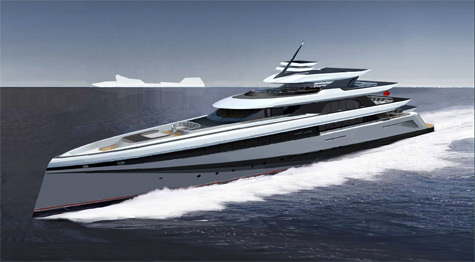
Sauter Carbon Offset Design introduces Transcendence , the world’s first Zero Carbon Megayacht with a top speed of 25 knots.
“Transcendence is the Carbon Offset Alternative to comparable Hi-performance Megayachts. Her overall size (49m) and maximum speed (25knots) are the same, but alas, her Carbon Footprint is far smaller, often reaching zero”, – commented Richard Sauter , the head of design department.
A state of the art Solar Hybrid design achieves a 50 to 100% reduction in GHG emissions by employing Mercedes Benz/MTU Bluetec engines to produce the cleanest marine propulsion system in the world.
Solar cells, KER and Plug-in sources of energy charge a Lithium ion storage system that runs all Hotel services. The same Lithium UPS allows Transcendence to achieve her maximum speed under peak loads or to navigate in and out of harbors with Zero emissions.
As a Carbon Offset Megayacht, Transcendence is a potential 4,000 ton per year Certified Carbon Offset Project. As such, her reduction in CO2 emissions is equivalent to the annual carbon footprint of 1,000 average people on earth.
The green technologies of the Transcendence include:
Mercedes Benz & MTU Bluetec diesel electric power generation Azimuth counter rotating CLT high torque propeller systems Hydro and aerodynamic advances Hi-speed displacement hull design Maximum solar cell deployment (PV deck spoilers rated at 30 kws) KER (Kinetic energy regeneration) Energy efficient equipment, including waste heat recovery Computerized energy management, maintenance & guidance Plug-in Lithium UPS rated at 1,000 kwh
Related links: Sauter Carbon Offset Design
Photo: sautercarbonoffsetdesign.com
- eco-friendly design
- hybrid yacht
- Richard Sauter
- Sauter Carbon Offset Design
- solar energy
- solar-powered superyacht
- Transcendence
- Zero Carbon Megayacht
Related Articles
Skia by design storz: unveiling of a 109-meter superyacht concept, introducing the wallywhy100: a marvel of design and performance, sinot’s beach superyacht series: a symphony of luxury, nature, and sustainability, staying afloat: a guide to survival suits for boaters, navigating waters with ease: top 5 dog ramps for your water-loving pup, unleashing comfort and safety: a guide to essential boat accessories for dogs, unwrapping the top 10 best christmas gifts for yacht enthusiasts, docktail butler elite teak table: elevating yachting experiences with elegance and functionality, exploring the abyss: unveiling the powervision powerray wizard underwater drone, seas of sip: captain ladle and the toadfish tumbler tale, sailing the seas of sound: the fusion® apollo™ ms-srx400 marine zone stereo adventure, water exploration with robosea warp10 water scooter.
OceanShaker.com is a treasure chest of information for people who really "dig" yachts. We believe our project will be a real concoction of beautiful yachts, fresh news, ocean winds and, of course, adventures.
Contact us: [email protected]
© Copyright 2023 - Oceanshaker.com
- North America
- South East Asia
- United Kingdom
- Global contacts
- Climate-tech centre
- Small modular reactors
- Micro-Reactor
- Digital Platforms
- Digital Twin
- The Aletheia Framework ®
- Sustainability
- Purchase Parts & Services
- Other Customers
- Aircraft Transitions
- Capable & Versatile
- RB211-524G/H & -T
- RB211-535E4
- Tay 620 / 650
- M250 turboshaft
- M250 turboprop
- Future products
- Access our testing capabilities
- Testbed facilities
- Net Zero for Future Combat Air Systems
- Developing the Next Generation
- Digital FIRST
- Energy Transition for Defence
- LibertyWorks
- Rolls-Royce LiftSystem®
- M250 Turboshaft
- Trent 700 MRTT
- M250 Turboprop
- T56 3.5 Enhancement
- Distributed Generation Systems
- MT30 Marine Gas Turbine
- AG9160 Generator Set
- AG9140 Generator Set
- MT7 Marine Gas Turbine
- Power Systems
- Naval Handling Systems
- Naval Support & Services
- TwinAlytix®
- Power Generation Solutions
- Governmental
- Power Systems Sustainability
- Our Electrical power & propulsion portfolio
- Our Capability
- Our Strategy
- Executive Team
- Corporate governance
- Where We Operate
- Advanced Manufacturing Research Centres
- Research and University Technology Centres
- Rolls-Royce Cybersecurity Technology Research Network
- Our Businesses
- Our History
- Our Heritage Centres
- Heritage Trust – Bristol
- Heritage Trust – Coventry and Ansty
- Heritage Trust – Derby and Hucknall
- Heritage Trust – Indianapolis
- Heritage Trust – Scottish branch
- Become a member
- Learn and explore
- Contact the Trust
- The Magazine
- News & Insights
- Members’ events
- R-RHT Documents
- Inventors & technology licensing
- Defence aerospace business team
- Defence team
- Corporate sustainability team
- Heritage team
- Helicopters team
- Pensions team
- Rolls-Royce no Brasil
- ロールス・ロイスについて
- country-landing-navigation
- Történeteink
- Támogatott kezdeményezések
- Nachrichten
- Geschichten
- Werde Teil des Teams in Dahlewitz bei Berlin
- Talent Community
- Direkteinstieg
- Praktikanten und Werkstudenten
- Karriere bei Rolls-Royce Electrical
- Schülerpraktika
- Tag der Ausbildung
- Engineering
- Manufacturing & supply chain
- Civil Aerospace
- Our approach
- Our community programmes
- MT30 함정용 가스터빈
- MT7 함정용 가스터빈
- 전기, 자동화 및 제어
- Our stories
- The wider South East Asia
- قطاع الطيران المدني
- أنظمة الطاقة
- رولز-رويس التكنولوجيا والفضاء
- رولز-رويس إس إم آر
- معامل بيانات آر2
- تواصلو معنا
- Our emissions footprint
- Decarbonising complex and critical systems
- Creating an enabling environment
- Materiality
- Ethics and compliance
- Engineering and innovation
- Operations and facilities
- Our Stakeholders
- Cyber Security
- Reporting approach
- Target progress
- Data charts
- Share price
- Analyst consensus
- Small Modular Reactors
- Why Rolls-Royce?
- 2023 Full Year Results
- Regulatory news
- Financial Results
- Annual Report 2023
- Annual Reports archive
- Financial calendar
- General Meetings 23 May 2024
- General Meeting archive
- Payments to shareholders
- Manage your shareholding
- Shareholder fraud warning
- Debt Securities
- Rights issue
- Investor contacts
- Company announcements
- Trade press releases
- Press releases
We develop and deliver complex power and propulsion solutions for safety-critical applications in the air, at sea and on land.
Our products and service packages enable our customers to connect people, societies, cultures and economies together.
Products & Services
We develop and deliver complex power and propulsion solutions.
For more than 100 years we have been at the forefront of innovation. Helping to power, protect and connect the modern world.
Create your future with us
Help us deliver better power for our changing world.
Doing more with less
We have a fundamental role in meeting the environmental and societal opportunities and challenges that the world faces.
Capital Markets Day 2023
We will announce new strategic and financial priorities on 28 November 2023 at our Capital Markets Day. We are inviting investors and stakeholders to hear our new priorities and objectives from our leadership team via a livestream.
Rolls-Royce announced Full Year Results on 22 February 2024.
View results
News centre
Updates and news from around the Rolls-Royce businesses.
Sign up to get the latest news
Wednesday 28 September 2022 12:00 PM
Rolls-Royce delivers mtu Hybrid PropulsionPack for mega yacht to be built by Turquoise Yachts
28 September 2022
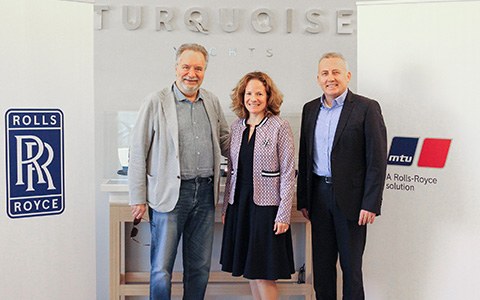
- New 76m displacement mega yacht from Turquoise to be equipped with hybrid propulsion
- mtu Hybrid PropulsionPack encompasses two 12V 4000 M65L engines fulfilling IMO III emissions directive and complete hybrid system
Rolls-Royce has received an order from Turkish yacht builder Turquoise Yachts to supply an mtu Hybrid PropulsionPack for a newbuilt 76m displacement mega yacht. The yacht will be equipped with a Rolls-Royce integrated mtu hybrid propulsion system, comprising two mtu 12-cylinder Series 4000 M65L engines with SCR system, fulfilling the strict IMO III emissions directive. The system also includes two gearboxes, two e-motors and electric cooling systems, two variable speed gensets, a battery system and electrical power management system and the mtu NautIQ Blue Vision NG hybrid automation system which monitors and controls the hybrid propulsion system. The mtu system allows for fully electric operation when necessary, for example for anchoring without exhaust gases and maneuvering in port, helping to protect the climate and offering even more comfort on board. The mtu hybrid system is set to be delivered in 2023, the yacht is to be commissioned in 2025. Turquoise will also build a second yacht with a conventional mtu propulsion system.
Mehmet Karabeyoğlu, Partner of Turquoise Yachts, said: “With this new project we are setting new standards for comfort and environmental protection in a mega yacht. We are happy to have found Rolls-Royce as the right partner for this endeavor.”
Denise Kurtulus, Vice President Global Marine at Rolls-Royce business unit Power Systems, said: “The cooperation with Turquoise is another fantastic milestone in our efforts to make shipping in general and also the yacht application greener and more climate-friendly with our mtu power and propulsion solutions. We are proud to be pioneering hybrid solutions in the mega yacht segment together with Turquoise Yachts.”
Ali Guzel, CEO of Rolls-Royce Solutions Türkiye said: “We are happy and proud to work with Turquoise, one of the most important companies in the segment. This innovative project is very prestigious for us and we expect an excellent outcome for both parties.”
The mtu hybrid portfolio offers flexible propulsion solutions for yachts, ferries, tugs and windfarm vessels. The mtu Hybrid PropulsionPacks are offered in a power range from 1,119 kW to 4,300 kW per diesel engine plus 165 kW to 743 kW per electric motor for each drive train. The maximum propulsion power is 10,000 kW per vessel. To ensure the optimum propulsion solution for each type of ship, Rolls-Royce offers a modular hybrid kit with standardized components. The mtu hybrid system serves as the basis for a future standard architecture with other new sustainable technologies. One example for such climate-friendly technologies that could be integrated are the mtu high-speed methanol engines which Rolls-Royce is currently developing as a pioneer in the marine industry. First mtu methanol engines are already on order for delivery in 2026.
Rolls-Royce business unit Power Systems with its mtu solution brand is currently transforming from an engine manufacturer to a provider of integrated sustainable propulsion and energy solutions. With the sustainability programme “Net Zero at Power Systems”, Power Systems is taking concrete steps towards climate-friendly and climate-neutral solutions in all applications. For example, from 2023, the company is releasing its mtu Series 2000 and 4000 engines for sustainable fuels such as e-diesel and HVO (renewable diesel), thus enabling climate-neutral mobility. In addition to the use of sustainable fuels, the company is building on new technologies such as methanol engines and CO2-free fuel cell systems, which could also be used in yachts.
Press photos are available for download from https://www.mtu-solutions.com/eu/en/news-and-media/media-center.html
- Rolls-Royce pioneers the power that matters to connect, power and protect society. We have pledged to achieve net zero greenhouse gas emissions in our operations by 2030 (excluding product testing) and joined the UN Race to Zero campaign in 2020, affirming our ambition to play a fundamental role in enabling the sectors in which we operate achieve net zero carbon by 2050.
- Rolls-Royce Power Systems is headquartered in Friedrichshafen in southern Germany and employs around 9,000 people. The product portfolio includes mtu -brand high-speed engines and propulsion systems for ships, power generation, heavy land, rail and defence vehicles and for the oil and gas industry as well as diesel and gas systems and battery containers for mission critical, standby and continuous power, combined generation of heat and power, and microgrids and is intensively engaged in the development of climate-neutral solutions.
- Rolls-Royce has customers in more than 150 countries, comprising more than 400 airlines and leasing customers, 160 armed forces and navies, and more than 5,000 power and nuclear customers.
- Annual underlying revenue was £10.95 billion in 2021, underlying operating profit was £414m and we invested £1.18 billion on research and development. We also support a global network of 28 University Technology Centres, which position Rolls-Royce engineers at the forefront of scientific research.
- Rolls-Royce Holdings plc is a publicly traded company (LSE:RR., ADR: RYCEY, LEI: 213800EC7997ZBLZJH69).

News and stories
Our alert service delivers the latest press releases, stories and regulatory news directly to your mailbox

Can we help? Contact a member of our press team for more information
- Press release
- Company announcement
- Commercial marine
- Electrification
- Engineering and manufacturing
- Sustainable power
Rolls-Royce develops and delivers complex power and propulsion solutions for safety-critical applications in the air, at sea and on land.
© Rolls-Royce plc 2024. All rights reserved.
© Rolls-Royce plc . All rights reserved.
- Products & Services
- Country sites
- Electrical Aviation
Vulnerability Reporting
Disclosure Policy
- Use of cookies
- Cookie Settings
- Legal information
- Data privacy
- Anti-slavery statement
- Accessibility

Daily Nautica

Azimut reveals their design for Grande 44M: the new flagship
Azimut grande 44m demonstrates how true innovation can anticipate the real desires of yacht owners., photo gallery 5 images.
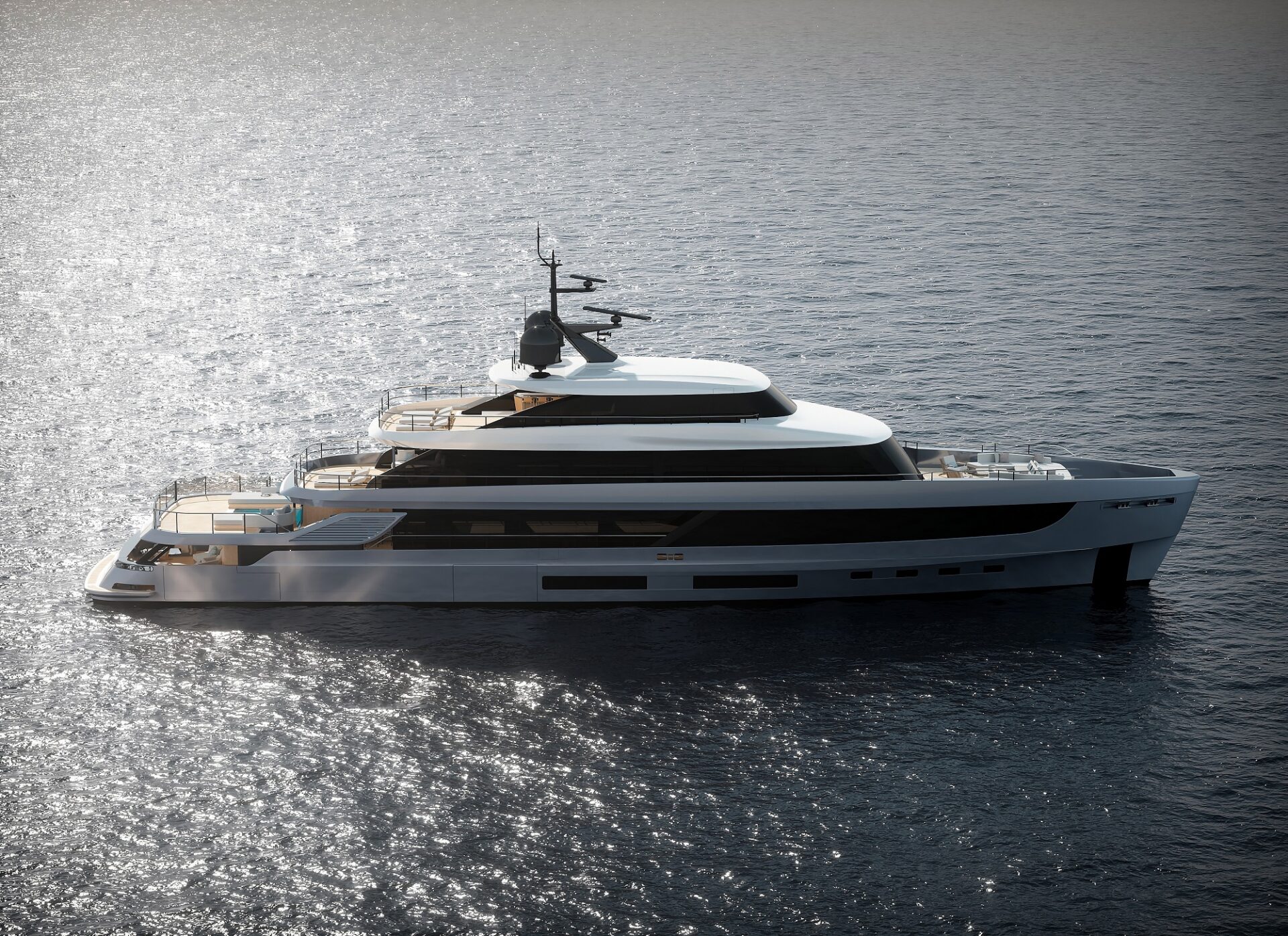
GOING GREEN
Topics: Azimut Grande 44M
Leave a Reply Cancel reply
Your email address will not be published. Required fields are marked *
Save my name, email, and website in this browser for the next time I comment.

Privacy Overview
INFORMAZIONI SUL TRATTAMENTO DEI DATI PERSONALI
ai sensi dell’art. 13 del Reg. UE 2016/679 “GDPR”
La newsletter di Daily Nautica è distribuita in automatico e via e-mail a quanti fanno richiesta di riceverla compilando il modulo presente in questa pagina.
Titolare del trattamento
Titolare del trattamento dei dati è Carmolab di Claudio Carmosino & C. S.a.s., con sede legale in Genova, piazza Rossetti n. 4/2, P.IVA 01784640995 e può essere contattato all’indirizzo postale indicato o all’indirizzo e-mail [email protected] .
Oggetto e finalità del trattamento
Il Titolare tratta soltanto l’indirizzo e-mail del destinatario, con la sola finalità di inviare la newsletter.
La base giuridica è la richiesta avanzata dal destinatario con la compilazione del modulo presente in questa pagina.
Non sono trattati dati rientranti tra quelli che gli articoli 9 e 10 del Reg. UE 2016/679 definiscono come “ categorie particolari di dati personali”, e cioè dati personali che rilevino l’origine razziale o etnica, le opinioni politiche, le convinzioni filosofiche o religiose, l’appartenenza sindacale, dati genetici o biometrici, dati relativi alla salute o alla vita sessuale o all’orientamento sessuale della persona, dati giudiziari o relativi a reati o misure di sicurezza.
Conferimento dei dati
Il conferimento dei dati avviene su base volontaria da parte dell’interessato che intenda chiedere l’invio della newsletter, ma l’eventuale rifiuto avrà come conseguenza l’impossibilità di ricevere il servizio richiesto.
Modalità del trattamento
I dati forniti saranno utilizzati con strumenti informatici e telematici al solo fine di fornire il servizio richiesto e, per tale ragione, saranno conservati esclusivamente per il periodo in cui lo stesso sarà attivo.
Non è adottato alcun processo decisionale automatizzato, come ad esempio la profilazione.
Destinatari dei dati
I server ove vengono conservati i dati si trovano in Italia ed i dati non saranno soggetti a diffusione o a trasferimento verso Paesi extra-UE o organizzazioni internazionali, ma potranno essere comunicati a soggetti che assistono il Titolare, ad esempio per esigenze di manutenzione tecnologica del sito.
Diritti dell’interessato
In ogni momento, l’interessato potrà esercitare, ai sensi degli articoli dal 15 al 22 del Regolamento UE n. 2016/679, il diritto di:
- chiedere la conferma dell’esistenza o meno dei propri dati personali e l’accesso agli stessi;
- ottenere le indicazioni circa le finalità del trattamento, le categorie dei dati personali, i destinatari o le categorie di destinatari a cui i dati personali sono stati o saranno comunicati e, quando possibile, il periodo di conservazione;
- chiedere al titolare la rettifica o la cancellazione dei dati trattati, la limitazione del trattamento dei dati che lo riguardano o la portabilità degli stessi;
- opporsi al trattamento in qualsiasi momento ed anche nel caso di trattamento per finalità di marketing diretto;
- revocare il consenso in qualsiasi momento senza pregiudicare la liceità del trattamento basata sul consenso prestato prima della revoca;
- proporre reclamo a un’autorità di controllo, che in Italia è l’Autorità Garante per la protezione dei dati personali (all’indirizzo email [email protected] , al numero di fax 06.696773785 o a mezzo posta all’indirizzo piazza di Monte Citorio n. 121 – 00186 Roma).
Può esercitare i Suoi diritti con contattando il Titolare all’indirizzo postale sopra indicato oppure utilizzando l’indirizzo e-mail [email protected] .
I accept the Privacy Policy
- Share on Facebook
- Share on Twitter
- Share on Linkedin
- Share on WhatsApp
5th International exhibition of boats and yachts Moscow Boat Show a Huge Success
- Inspiration
Related News
Popular news this week, popular news this month, latest news.
- Yacht Charter & Superyacht News >
Written by Zuzana Bednarova
The first pavilion of Crocus Expo IEC hosted an extraordinary exposition of the 5th International exhibition of yachts and boats Moscow Boat Show. The show had been incredibly famous for five years already not only thanks to the specialists of the market segment as well as professional sportsmen but also thanks to those who consider sailing sport to be their hobby and well cherished dream.
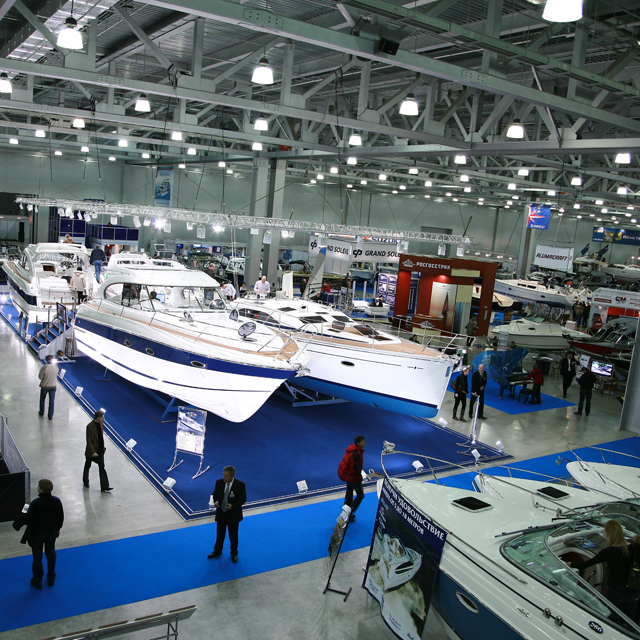
Moscow Boat Show 2012
The organizer of the project was the Crocus Expo International Exhibition Centre. The show was supported by Aston Martin Moscow, Burevestnik Group logistics department and the Yachting specialized magazine.
The exposition space increased up to 30 000 sq m and was accommodated in all 4 exhibition halls of the fairgrounds! 280 Russian (Arkhangelsk, Vyborg, Kazan, Kaluga, Republic of Karelia, Moscow and Moscow region, Nizhny Novgorod, Novorossiysk, Novosibirsk, Rostov-on-Don, Samara, St. Petersburg, Sverdlovsk region, Sochi, Chelyabinsk, Tyumen and Yaroslavl region) and foreign ( Denmark , Germany , Holland , Greece , Spain , Italy , Cyprus , China , Latvia , Poland , USA , Turkey , Ukraine, Finland , France , Montenegro and Croatia ) companies participate in the show.
Moscow Boat Show provided the perfect platform from which to preview new products, evaluate market trends, and establish long-lasting and commercially profitable partnerships. Despite the dynamic changes taking place in Russia and the rapid growth of the yachting sector, the show continued to complement and reflect the industry’s demand and is a promotional opportunity not to be missed!
Unique exhibits were presented at the show for the first time: exposition of private submarines from U-Boat Russia company, Marquis Yachts 420 SB motor yacht from Sport Bridge S. Marine series, SAGA-415 yacht from Saga Boats Norwegian shipyard, Jetlev-Flyer from MS Watersports.
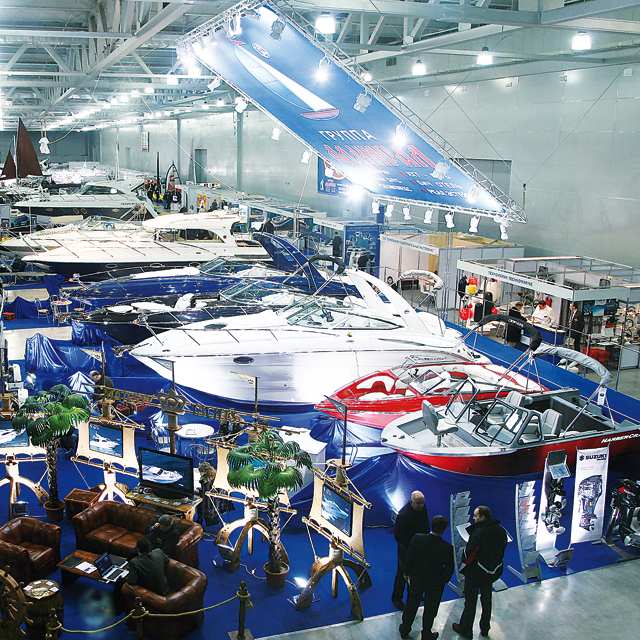
Moscow Boat Show a Great Success
More than 400 yachts were displayed within the frames of the event including the largest boats ever exhibited in Russia – the 19-meter giant motor yacht Princess 54 as well as the Princess 50 yacht from Nord Marine and Baja speed boat from Burevestnik.
Domfinland OY unveiled a luxury project from Finnish real estate: a seaside premium class hotel in Hanko named consonant with the location Merihanko.
The trade fair was traditionally opened by a Gala Opening Ceremony. Arcady Zlotnikov, First Deputy Director Crocus Expo IEC, was the first to take the floor at the official opening ceremony. He greeted warmly exhibitors, guests and visitors of Moscow Boat Show. Nikolay Krjuchek, Deputy Chief of the State Inspection on Small size Vessels (GIMS) of the Ministry for Emergency Situations of Russia, Georguiy Shaiduko, Acting President of the Russian Yachting Federation (VFPS), Olympic champion in Atlanta and Ekaterina Grishechkina, Director of exhibition Moscow Boat Show also spoke at the ceremony.
The high-ranking guests noted dynamic development of the branch which well reasoned the intensive growth of the exposition and appearance of rather unique “gems”.
A number of business meetings and negotiations were held within the frames of the project: the exhibition was visited by a large delegation of Greek businessmen for the purpose of establishment of mutually beneficial cooperation with the Russian colleagues.
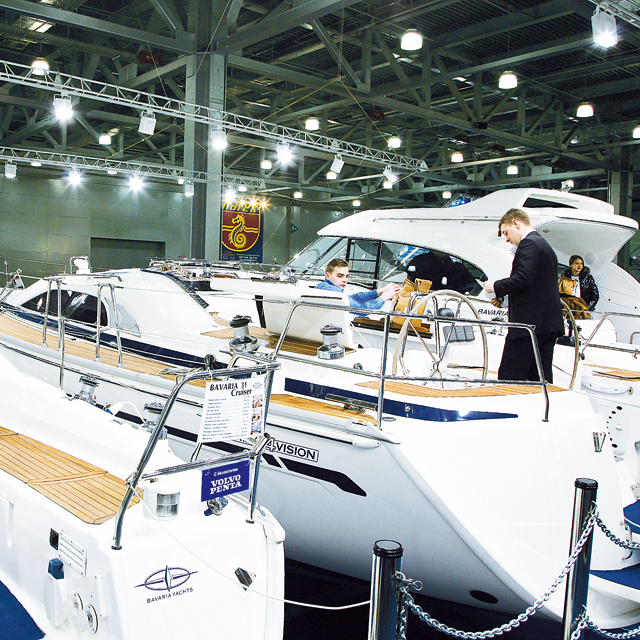
More than 400 yachts on display at the Show
Russian Yachting Federation (VFPS) celebrated its 100 anniversary within the frames of Moscow Boat Show and arranged an exposition of future sailing sport museum (rare awards, gifts, articles from private collections, pictures and etc.) which had been collected since 1912.
Due to carefully chosen running dates the show was visited by more than 26 000 people. The majority of the visitors were of targeted audience – vessel owners and specialists of the branch.
The work at the next edition of the show is under way! The show will be held in March 2013. The overall exhibit space will comprise 40 000 sq m. The exhibition will impress with exclusive exhibits and the latest technological achievements.
Moscow Boat Show was not only an entertaining but at the same time a business promotional event. Participation in the trade fair was a unique opportunity to present a company and products to a distinctly selected targeted audience of industry specialists. They were well prepared to discuss business in the Russian market and even to close a deal on-site.
The show helped representatives of yachting business to get acquainted with their Russian colleagues and gradually improved national yachting market to a new level. It is obvious that for 5 years of its running the project has turned to a status event of the international exhibitions calendar.
Please contact CharterWorld - the luxury yacht charter specialist - for more on superyacht news item "5th International exhibition of boats and yachts Moscow Boat Show a Huge Success ".
- Charity & Fund Raising
- CharterWorld News
- Classic Yachts
- Coronavirus
- Cruise Ship
- Ecological Yachts
- Expedition Yachts
- Expert Broker Advice
- Feature Superyachts
- Interior Design
- Legal & VAT Yacht Issues
- Luxury Catamarans
- Luxury Gulet
- Luxury Phinisi
- Luxury Trimarans
- Luxury Yacht Design
- Luxury Yachts
- Marinas & Harbours
- Marine Ecology
- Marine Electronics
- Marine Equipment
- Mega Yachts
- Modern Yachts
- Motor Yachts
- New Launch Yachts
- New To Charter
- Open Style Sports Yachts
- Private Jets
- Sailing Yachts
- Social Media
- Sports Yachts
- Superyacht Crew
- Superyacht Photographers
- Superyacht Products & Supplies
- Superyacht Refits
- Superyacht Reviews
- Superyachts
- Uncategorized
- Yacht Builders
- Yacht Charter
- Yacht Charter Destinations
- Yacht Charter Picks
- Yacht Charter Specials
- Yacht Delivered to Owner
- Yacht Designers
- Yacht Events & Boat Shows
- Yacht Fashion
- Yacht Industry News
- Yacht Photos
- Yacht Racing
- Yacht Racing & Regattas
- Yacht Safety Equipment
- Yacht Support Vessels
- Yacht Tenders
- Yacht Videos
- Yachting Associations
- Yachting Awards
- Yachting Business
- Yachts For Charter
- Yachts For Sale
Quick Enquiry
Superyacht news:.
Email Your Yachting News to: news @ charterworld.com
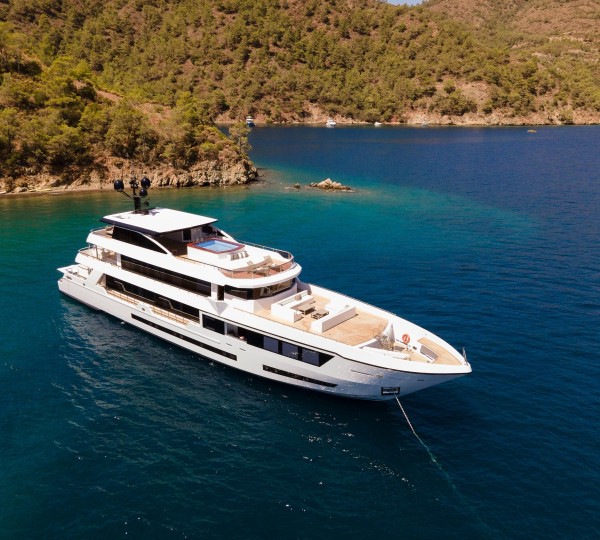
5th Moscow Boat Show, March 20-25, 2012
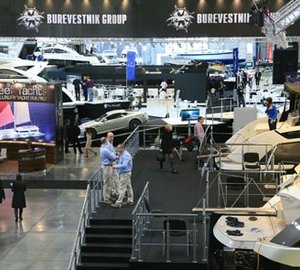
The Gala Opening Ceremony of the 5th Moscow Boat Show held on March 20
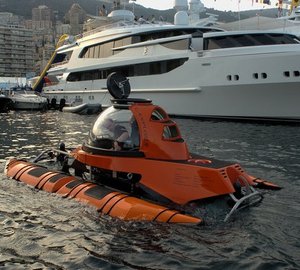
Russian debut for U-Boat superyacht submarines at Moscow Boat Show 2012
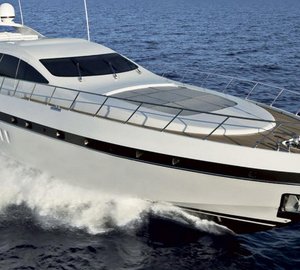
Maxi-Open Mangusta Yachts presented at Boat Shows in Palm Beach and Moscow
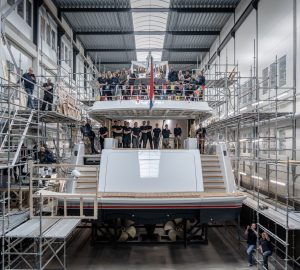
Mulder Yachts Launches the Seventh Mulder ThirtySix, motor yacht Q43
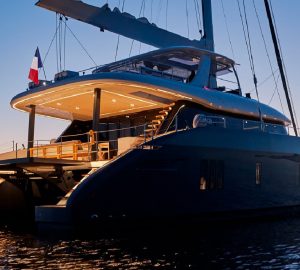
Sailing catamaran FELICITA makes her debut on the charter market
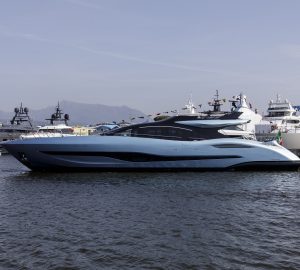
Mangusta announce the launch of the sixth hull in the MANGUSTA 104 REV series
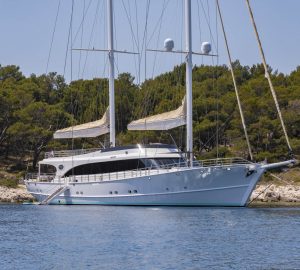
49m sailing yacht ACAPELLA is offering a fabulous June ‘fill the gap’ special offer on charters in Croatia

Explorer style motor yacht ROCKIT available for charter in select locations around the world
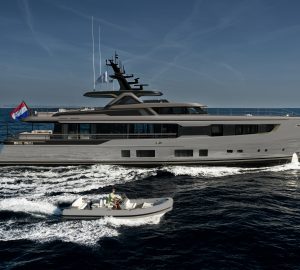
Mulder unveils the luxury yacht MULDER THIRTYSIX Hull #8

Florida charter yacht REAL SUMMERTIME offering 10% discount
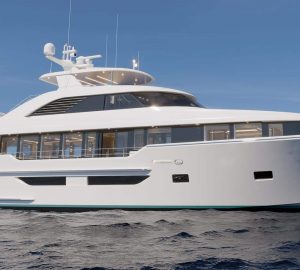
Westport announce the first hull of their 36m W117 range is nearing completion
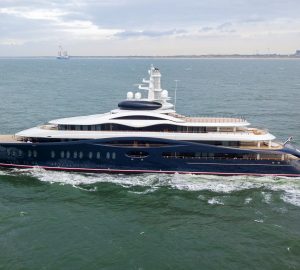
Superyacht LAUNCHPAD previously Feadship 1010 delivered
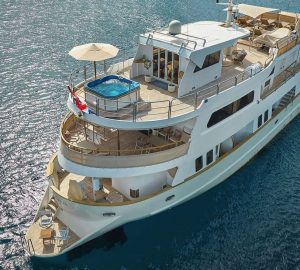
Croatian charter yacht LA PERLA offering 10% discount on exclusive vacations in the Adriatic
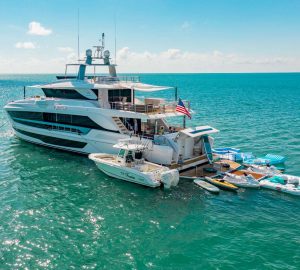
33m luxury yacht FREEDOM for charter in the Caribbean and New England
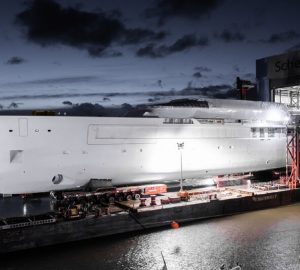
News from Feadship about superyachts PROJECT 712 and PROJECT 715
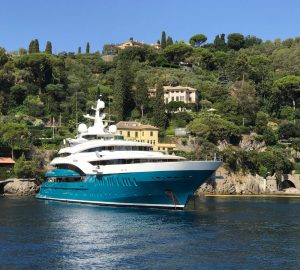
Charter a yacht during the Monaco Historic and F1 Grand Prix festivals and soak up the atmosphere from on deck
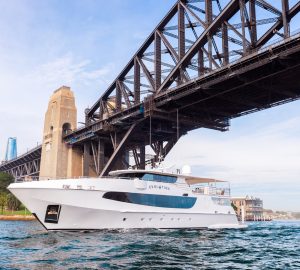
39m luxury yacht EVOLUTION for charter on Australia’s east coast

IMAGES
VIDEO
COMMENTS
The Earth 300 is designed to be an emissions-free vessel. Courtesy Earth 300 Olivera says he envisages Earth 300 to become an iconic object of its generation, and draws comparisons to the Olympic ...
Luxury mega-yachts can burn up to 7,020 tons of CO2 a year, according to research by. Richard Wilk, a professor of anthropology at Indiana University, and his colleague Beatriz Barros, a Ph.D ...
Yacht emissions for Bernard Arnault, owner of LVMH and France's richest man, accounted for nearly 9,000 tonnes of his total of 10,400 tonnes. There are other ways for the wealthy to be ...
The bulk of these emissions happen whether or not a yacht actually travels anywhere. Simply owning one - or indeed building one - is an act of enormous climate vandalism.
We estimate that he was responsible for at least 33,859 metric tons of CO2 emissions in 2018 - more than two-thirds from his yacht, which is always ready to use at a moment's notice year-round ...
Regulations aimed at limiting noxious emissions from superyacht engines will be in place by January 2021. Kate Lardy investigates how these new rules are impacting the industry ahead of the approaching deadline. "After January 1, 2021, we are out of business selling boats over 24 meters," Pat Healey, president and CEO of Viking Yachts, announced at the Fort Lauderdale Boat Show this past fall.
And that's just a single ship. Worldwide, more than 5,500 private vessels clock in about 100 feet or longer, the size at which a yacht becomes a superyacht.This fleet pollutes as much as entire ...
The rising fortunes of the world's billionaires during the pandemic helped fuel a record £5.3bn in superyacht sales last year, prompting calls for new curbs on their emissions.
The average U.S. citizen has a CO2 footprint of 16 tons, and the global average is about 5 tons per person. Meanwhile, the average billionaire contributes 8,190 tons of CO2 to the atmosphere every year. For the highest-emitting billionaires, mega-yachts are responsible for the majority of their emissions.
OBSIDIAN was built with the intention to be even more energy efficient than SAVANNAH, Feadship's ground-breaking hybrid yacht launched in 2015. Through hulls optimised at cruising speed, weight control, advancements in electric propulsion, and the ability to run engines on HVO, a non-fossil diesel fuel which reduces carbon emissions by 90%, OBSIDIAN represents the future of sustainable ...
Mega yachts — like Russian oligarch Roman Abramovich's 162-meter-long boat that comes with two helipads and a ... Policymakers could also curb emissions from the very richest by banning private ...
Yacht design studios Van Geest Design and Rob Doyle Design have devised a trimaran concept that they believe to be "the first truly zero-emission yacht over 750 gross tonnage".
As a Carbon Offset Megayacht, Transcendence is a potential 4,000 ton per year Certified Carbon Offset Project. As such, her reduction in CO2 emissions is equivalent to the annual carbon footprint of 1,000 average people on earth. The green technologies of the Transcendence include: Mercedes Benz & MTU Bluetec diesel electric power generation
YETI is the tool developed by the Water Revolution Foundation to score yachts on harmful emissions. Feadship and Heesen, two of the industry's leaders, offer insight.
This megayacht can operate for 15 days without emissions. Lürssen Yachts uploaded a new video to YouTube today sharing the successful technical launch of the Project Cosmos from its facility in ...
But Feadship is one step closer to achieving its green mission by 2030. The 276-footer Obsidian recently debuted, the first delivery of the new sustainably-focused fleet. Feadship's mission for the yacht was to become more energy efficient and emit less carbon than its elder sister, the hybrid vessel Savannah, delivered in 2015.
Lürssen Yachts, a German boatmaker known for building large boats and yachts has unveiled a nearly 375 feet (114.2 m) long megayacht powered by methanol. Dubbed Project Cosmos, the yacht's ...
"We see a lot of potential in mega yachts for new environmentally friendly technologies, which we also use directly in the ONE 50, for example the fuel cell for emission-free ship operation. We attach very great importance to this. In addition to the many competencies and skills we already have, we will also bring additional specialists from ...
A zero-emission molten salt reactor-powered vessel. The Earth 300 vessel is planned to be zero-emission, running on nuclear energy from an onboard molten salt reactor based on technology similar ...
New 76m displacement mega yacht from Turquoise to be equipped with hybrid propulsion; ... We have pledged to achieve net zero greenhouse gas emissions in our operations by 2030 (excluding product testing) and joined the UN Race to Zero campaign in 2020, affirming our ambition to play a fundamental role in enabling the sectors in which we ...
The design of the new Azimut flagship was revealed during the Palm Beach International Boat Show - the Grande 44M brings together technological innovation, visionary design and environmental sustainability. This model astounds with something that currently does not exist, a superyacht with reduced CO2 emissions, which, over four decks, expresses a fluid yet decisive design that envelopes and ...
He also said that the fuel cell technology would allow the yacht's owner more than 15 nights emission-free at anchor or over 1,000 miles (1,609 km) of emission-free slow cruise.
This image is featured as part of the article Maxi-Open Mangusta Yachts presented at Boat Shows in Palm Beach and Moscow. Megayacht Mangusta 165 Please contact CharterWorld - the luxury yacht charter specialist - for more on superyacht news item "Megayacht Mangusta 165".
The 5th edition of the International exhibition of yachts and boats - Moscow Boat Show, held from March 20 to 25, 2012 will be hosted by the first pavilion of Crocus Expo International Exhibition Centre.This popular show is dedicated not only to the specialists of the market segment and professional sportsmen but also to those who consider sailing sport to be their hobby and well cherished ...
The first pavilion of Crocus Expo IEC hosted an extraordinary exposition of the 5th International exhibition of yachts and boats Moscow Boat Show. The show had been incredibly famous for five years already not only thanks to the specialists of the market segment as well as professional sportsmen but also thanks to those who consider sailing ...